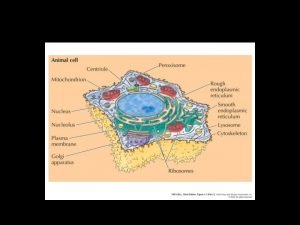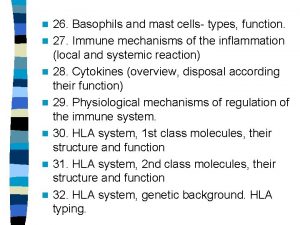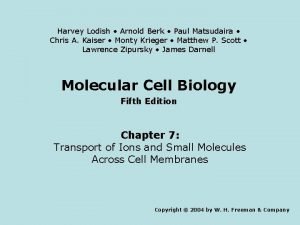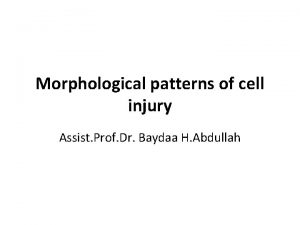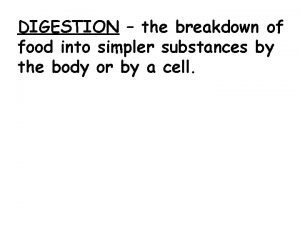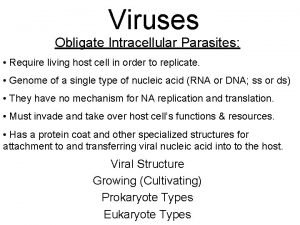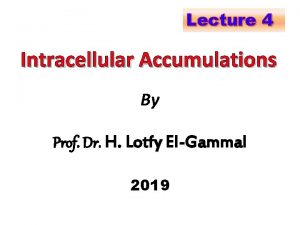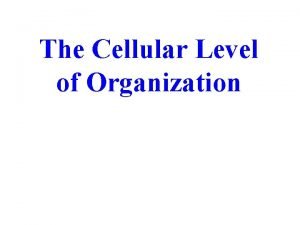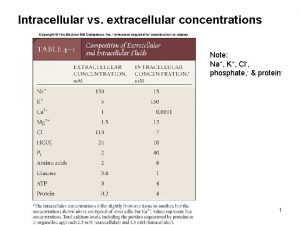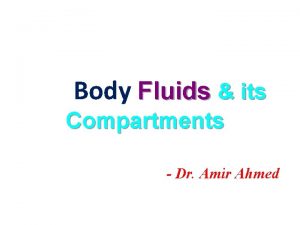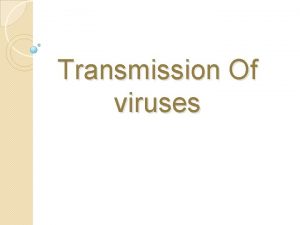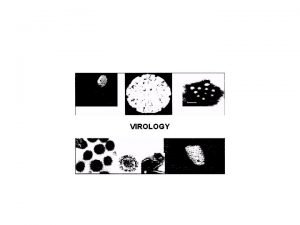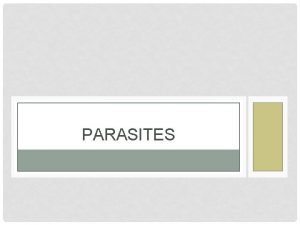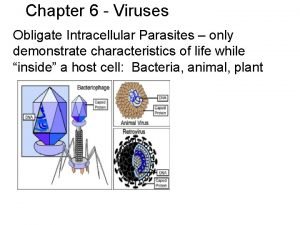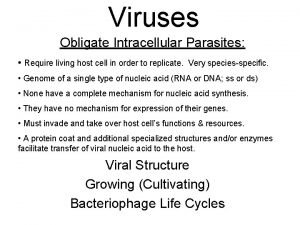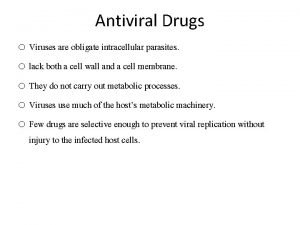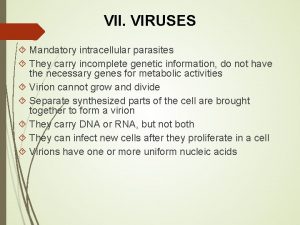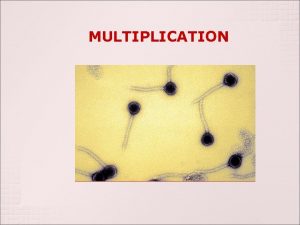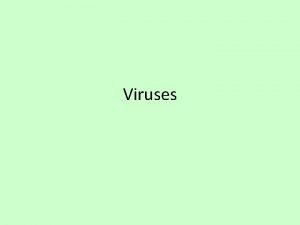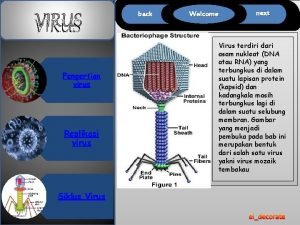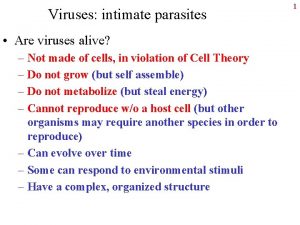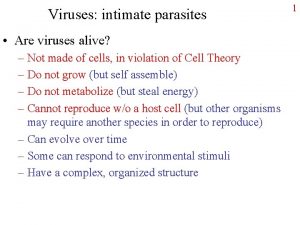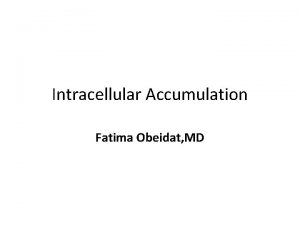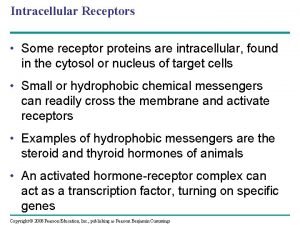Viruses Virus intracellular parasites small infectious agent that



































- Slides: 35

Viruses

Virus “intracellular parasites” • small infectious agent that can replicate only inside the living cells of organisms

Chicken Pox and Shingles Virus

Virion: an entire virus particle • Consists of: • DNA or RNA • Protein Coat – called a capsid • Sometimes a lipid envelope around the protein coat • You Tube Lytic Cycle (2: 17)

Bacteriophage Virus • capsid

Sometimes glycoprotein spikes to help the virus enter and exit the host cell

LYTIC INFECTION • Animation of a Lytic Infection • Mc. Graw Hill Life Cycle of a T 2 Phage

HIV • The Human Immunodeficiency Virus (HIV) • Can lead to AIDS (acquired immunodeficiency syndrome)

HIV INFECTION • HIV infection: a retrovirus (high level) • Shows receptors and how anti-viral drugs can be effective HIV budding from a lymphocyte

Lytic Infection

Examples Lytic Infections • Common Cold • Influenza • Rabies • TMV (tobacco mosaic virus)

Lysogenic Infection

Temperate Viruses • Also called lysogenic viruses • are those that reproduce without killing their host cell.

Common Lysogenic Virus • • • Herpes (genital and cold sore) Papilloma HPV (cervical cancer) Retrovirus Hepatitis B Chicken Pox

Retroviruses • Retroviruses use RNA instead of DNA as their nucleic acid core. • also contain the enzyme reverse transcriptase

Retrovirus Examples • HIV • Rous sarcoma (first one discovered) • Leukemia viruses

Viroids • Viroids are naked • Infect plants circular RNA (no protein coat) molecules that are several hundred nucleotides long.

Viroid Attack on Potatoes • Used to make varieties in flowers

Prions • a form of a normal protein that is not folded correctly. • Cause degenerative brain disease

Mad Cow Disease • BSE = bovine spongiform encephalitis • It's. . . BSE You Tube • Can cause CJD in humans

CJD • Creutzfeldt-Jakob disease (CJD) is a form of brain damage that leads to a rapid decrease of mental function and movement. • You Tube The BSE Prion and Variant CJD

Vaccines • “Harmless” variants or derivatives of pathogenic microbes that stimulate the immune system to make antibodies against the pathogen.

Edward Jenner First Vaccine (for smallpox) • Gave cowpox to his son first • Lots of people were getting smallpox

BACTERIA • Prokaryotes • Most of its DNA is in a single chromosome

Bacteria Can Transfer DNA in 3 Ways • 1. Transformation – uptake of foreign DNA from the surrounding environment • 2. Transduction – transfer of bacterial genes by a bacteriophage • 3. Conjugation – physical union of two bacterial cells as they “mate”

Transformation

Transduction

Conjugation

Bacterial Plasmids • F Factor = fertility plasmid

F Plasmid • Resistance Plasmid • Carry genes to destroy antibiotics

Identifying Bacteria • Mc. Graw Hill Prokaryotic Cell Shapes


Can you name these shapes?

Can you name these shapes? • • A Bacilli with and without flagella B Streptococci C Staphylococci D Diplococci E Spirochete F Club rod G Filamentous H Streptobacilli

Spores • dormant, tough, and non-reproductive structure produced by certain bacteria
 What is the smallest infectious disease agent
What is the smallest infectious disease agent Unlike lytic viruses, lysogenic viruses do not
Unlike lytic viruses, lysogenic viruses do not Lysogenic cycle animation
Lysogenic cycle animation Bacteria virus fungi and parasites
Bacteria virus fungi and parasites Clavibacter
Clavibacter Hãy nói thật ít để làm được nhiều
Hãy nói thật ít để làm được nhiều Thơ thất ngôn tứ tuyệt đường luật
Thơ thất ngôn tứ tuyệt đường luật Tôn thất thuyết là ai
Tôn thất thuyết là ai Ngoại tâm thu thất chùm đôi
Ngoại tâm thu thất chùm đôi Chiến lược kinh doanh quốc tế của walmart
Chiến lược kinh doanh quốc tế của walmart Gây tê cơ vuông thắt lưng
Gây tê cơ vuông thắt lưng Block nhĩ thất độ 1
Block nhĩ thất độ 1 Tìm vết của mặt phẳng
Tìm vết của mặt phẳng Sau thất bại ở hồ điển triệt
Sau thất bại ở hồ điển triệt Thơ thất ngôn tứ tuyệt đường luật
Thơ thất ngôn tứ tuyệt đường luật Intracellular receptors
Intracellular receptors Intracellular compartments and protein sorting
Intracellular compartments and protein sorting Intracellular and extracellular
Intracellular and extracellular Intracellular proteins
Intracellular proteins Vacuole transport
Vacuole transport Intracellular accumulation
Intracellular accumulation Intracellular accumulations
Intracellular accumulations Intracellular hormone binding
Intracellular hormone binding Derine
Derine Intracellular accumulation
Intracellular accumulation Break down food into simpler substances
Break down food into simpler substances Total body water
Total body water T4 bacteriophage
T4 bacteriophage Intracellular accumulation meaning
Intracellular accumulation meaning Intracellular structure
Intracellular structure Intracellular k concentration
Intracellular k concentration Ecf icf and interstitial fluid
Ecf icf and interstitial fluid Ecf icf and interstitial fluid
Ecf icf and interstitial fluid Intracellular digestion
Intracellular digestion Interstitial fluid vs extracellular fluid
Interstitial fluid vs extracellular fluid Oil rig oxidation
Oil rig oxidation

















